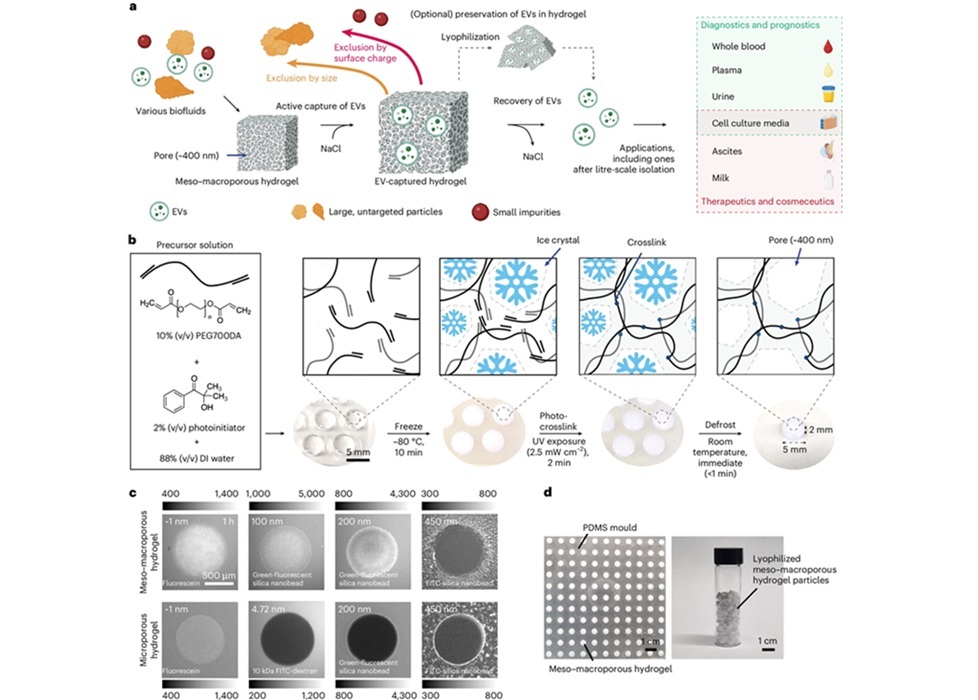Diabetes Blood Markers Linked to Alzheimer’s Disease Pathology
|
By LabMedica International staff writers Posted on 09 Sep 2020 |

Image: The Bio-Plex Luminex 200 instrument is a suspension array system which offers protein and nucleic acid scientists a reliable multiplex assay solution that permits analysis of up to 100 biomolecules in a single sample (Photo courtesy of Bio-Rad Laboratories).
Alzheimer's is a progressive disease, where dementia symptoms gradually worsen over a number of years. In its early stages, memory loss is mild, but late-stage Alzheimer's, individuals lose the ability to carry on a conversation and respond to their environment.
Type 2 diabetes is a known risk factor for cognitive impairment and Alzheimer’s disease, but the underlying mechanisms are still unknown. Insulin resistance has been associated with amyloid accumulation in cognitively normal middle-aged and late middle-aged individuals, but not in older age groups.
Neurologists at the University of Eastern Finland (Kuopio, Finland) and their colleagues investigated the association of blood markers of diabetes with beta-amyloid accumulation detected in PET scans in older people at risk of dementia. The study population included 41 participants aged 60 to 77 years from the Finnish Geriatric Intervention Study to Prevent Cognitive Impairment and Disability (FINGER) who had available data on insulin resistance and type 2 diabetes-related blood markers.
The team analyzed 12 markers related to glucose and lipid metabolism using the multiplex suspension array system Bio-Plex Luminex 200 instrument, (Bio-Rad Laboratories, Hercules, CA, USA), with the Bio-Plex Pro Human Diabetes 10-plex panel (C-peptide; ghrelin; GIP, gastric inhibitory polypeptide; GLP-1, glucagon-like peptide-1; glucagon; insulin; leptin; PAI-1; resistin; visfatin) and 2-plex panel (adiponectin, adipsin). The homeostatic model assessment of insulin resistance index (HOMA-IR) was calculated based on fasting blood insulin and glucose measures. APOE genotype was also determined.
The scientists reported that the participants’ mean age (±SD) was 71.1 ± 5.0 years, 51% were female, 15% had diabetes, 29% were APOE ɛ4 carriers, and 39% had amyloid positive PiB-PET scans. In the logistic regression model adjusted for diabetes status and APOE genotype, higher levels of insulin, HOMA-IR, C-peptide, and PAI-1were significantly associated with lower odds of amyloid positivity. After FDR correction, these four markers were significant only at the 90% confidence level. The coefficient of PAI-1 was insignificant in models including insulin, HOMA-IR, and C-peptide, but significant for fasting glucose, HbA1c, and all other tested analytes.
Alina Solomon, MD, PhD, an Associate Professor of Clinical Medicine Neurology and the senior author of the study, said, “The results could also suggest that in people with diabetes and vascular pathology, less amyloid accumulation in the brain may be needed to trigger the onset of Alzheimer’s dementia.”
The authors concluded that the main strength of their study was the assessment of a comprehensive assay of IR and type 2 diabetes-related markers in relation to brain amyloid-β accumulation on PiB-PET, which has not been previously done. The study was published on August 18, 2020 in the Journal of Alzheimer’s Disease.
Type 2 diabetes is a known risk factor for cognitive impairment and Alzheimer’s disease, but the underlying mechanisms are still unknown. Insulin resistance has been associated with amyloid accumulation in cognitively normal middle-aged and late middle-aged individuals, but not in older age groups.
Neurologists at the University of Eastern Finland (Kuopio, Finland) and their colleagues investigated the association of blood markers of diabetes with beta-amyloid accumulation detected in PET scans in older people at risk of dementia. The study population included 41 participants aged 60 to 77 years from the Finnish Geriatric Intervention Study to Prevent Cognitive Impairment and Disability (FINGER) who had available data on insulin resistance and type 2 diabetes-related blood markers.
The team analyzed 12 markers related to glucose and lipid metabolism using the multiplex suspension array system Bio-Plex Luminex 200 instrument, (Bio-Rad Laboratories, Hercules, CA, USA), with the Bio-Plex Pro Human Diabetes 10-plex panel (C-peptide; ghrelin; GIP, gastric inhibitory polypeptide; GLP-1, glucagon-like peptide-1; glucagon; insulin; leptin; PAI-1; resistin; visfatin) and 2-plex panel (adiponectin, adipsin). The homeostatic model assessment of insulin resistance index (HOMA-IR) was calculated based on fasting blood insulin and glucose measures. APOE genotype was also determined.
The scientists reported that the participants’ mean age (±SD) was 71.1 ± 5.0 years, 51% were female, 15% had diabetes, 29% were APOE ɛ4 carriers, and 39% had amyloid positive PiB-PET scans. In the logistic regression model adjusted for diabetes status and APOE genotype, higher levels of insulin, HOMA-IR, C-peptide, and PAI-1were significantly associated with lower odds of amyloid positivity. After FDR correction, these four markers were significant only at the 90% confidence level. The coefficient of PAI-1 was insignificant in models including insulin, HOMA-IR, and C-peptide, but significant for fasting glucose, HbA1c, and all other tested analytes.
Alina Solomon, MD, PhD, an Associate Professor of Clinical Medicine Neurology and the senior author of the study, said, “The results could also suggest that in people with diabetes and vascular pathology, less amyloid accumulation in the brain may be needed to trigger the onset of Alzheimer’s dementia.”
The authors concluded that the main strength of their study was the assessment of a comprehensive assay of IR and type 2 diabetes-related markers in relation to brain amyloid-β accumulation on PiB-PET, which has not been previously done. The study was published on August 18, 2020 in the Journal of Alzheimer’s Disease.
Latest Pathology News
- AI Tool to Transform Skin Cancer Detection with Near-Perfect Accuracy
- Unique Immune Signatures Distinguish Rare Autoimmune Condition from Multiple Sclerosis
- Simple Optical Microscopy Method Reveals Hidden Structures in Remarkable Detail
- Hydrogel-Based Technology Isolates Extracellular Vesicles for Early Disease Diagnosis
- AI Tool Improves Accuracy of Skin Cancer Detection
- Highly Sensitive Imaging Technique Detects Myelin Damage
- 3D Genome Mapping Tool to Improve Diagnosis and Treatment of Genetic Diseases
- New Molecular Analysis Tool to Improve Disease Diagnosis
- Tears Offer Noninvasive Alternative for Diagnosing Neurodegenerative Diseases
- AI-Powered Method Combines Blood Data to Accurately Measure Biological Age
- AI Tool Detects Cancer in Blood Samples In 10 Minutes
- AI Pathology Analysis System Delivers Comprehensive Cancer Diagnosis
- AI Improves Cervical Cancer Screening in Low-Resource Settings
- New Multi-Omics Tool Illuminates Cancer Progression
- New Technique Detects Genetic Mutations in Brain Tumors During Surgery within 25 Minutes
- New Imaging Tech to Improve Diagnosis and Treatment of Skin Cancers
Channels
Molecular Diagnostics
view channel
Microfluidic Device Predicts Pancreatic Cancer Recurrence After Surgery
Pancreatic ductal adenocarcinoma is one of the deadliest cancers, difficult to detect early, and prone to recurring in nearly 70% of patients after treatment. Its location deep in the abdomen and its aggressive... Read more
New Molecular Test Simultaneously Detects Three Major Fungal Infections
Serious fungal infections associated with soil exposure remain difficult to diagnose promptly, especially in regions where Histoplasma, Blastomyces, and Coccidioides are endemic. Many patients present... Read moreHematology
view channel
Platelet Activity Blood Test in Middle Age Could Identify Early Alzheimer’s Risk
Early detection of Alzheimer’s disease remains one of the biggest unmet needs in neurology, particularly because the biological changes underlying the disorder begin decades before memory symptoms appear.... Read more
Microvesicles Measurement Could Detect Vascular Injury in Sickle Cell Disease Patients
Assessing disease severity in sickle cell disease (SCD) remains challenging, especially when trying to predict hemolysis, vascular injury, and risk of complications such as vaso-occlusive crises.... Read more
ADLM’s New Coagulation Testing Guidance to Improve Care for Patients on Blood Thinners
Direct oral anticoagulants (DOACs) are one of the most common types of blood thinners. Patients take them to prevent a host of complications that could arise from blood clotting, including stroke, deep... Read moreImmunology
view channel
Chip Captures Cancer Cells from Blood to Help Select Right Breast Cancer Treatment
Ductal carcinoma in situ (DCIS) accounts for about a quarter of all breast cancer cases and generally carries a good prognosis. This non-invasive form of the disease may or may not become life-threatening.... Read more
Blood-Based Liquid Biopsy Model Analyzes Immunotherapy Effectiveness
Immunotherapy has revolutionized cancer care by harnessing the immune system to fight tumors, yet predicting who will benefit remains a major challenge. Many patients undergo costly and taxing treatment... Read moreMicrobiology
view channel
Blood-Based Molecular Signatures to Enable Rapid EPTB Diagnosis
Extrapulmonary tuberculosis (EPTB) remains difficult to diagnose and treat because it spreads beyond the lungs and lacks easily accessible biomarkers. Despite TB infecting 10 million people yearly, the... Read more
15-Minute Blood Test Diagnoses Life-Threatening Infections in Children
Distinguishing minor childhood illnesses from potentially life-threatening infections such as sepsis or meningitis remains a major challenge in emergency care. Traditional tests can take hours, leaving... Read more
High-Throughput Enteric Panels Detect Multiple GI Bacterial Infections from Single Stool Swab Sample
Gastrointestinal (GI) infections are among the most common causes of illness worldwide, leading to over 1.7 million deaths annually and placing a heavy burden on healthcare systems. Conventional diagnostic... Read morePathology
view channel
AI Tool to Transform Skin Cancer Detection with Near-Perfect Accuracy
Melanoma continues to be one of the most difficult skin cancers to diagnose because it often resembles harmless moles or benign lesions. Traditional AI tools depend heavily on dermoscopic images alone,... Read more
Unique Immune Signatures Distinguish Rare Autoimmune Condition from Multiple Sclerosis
Myelin oligodendrocyte glycoprotein antibody–associated disease (MOGAD) is a rare autoimmune disorder in which the immune system attacks the myelin sheath in the central nervous system. Although symptoms... Read moreTechnology
view channel
AI Saliva Sensor Enables Early Detection of Head and Neck Cancer
Early detection of head and neck cancer remains difficult because the disease produces few or no symptoms in its earliest stages, and lesions often lie deep within the head or neck, where biopsy or endoscopy... Read more
AI-Powered Biosensor Technology to Enable Breath Test for Lung Cancer Detection
Detecting lung cancer early remains one of the biggest challenges in oncology, largely because current tools are invasive, expensive, or unable to identify the disease in its earliest phases.... Read moreIndustry
view channel
Abbott Acquires Cancer-Screening Company Exact Sciences
Abbott (Abbott Park, IL, USA) has entered into a definitive agreement to acquire Exact Sciences (Madison, WI, USA), enabling it to enter and lead in fast-growing cancer diagnostics segments.... Read more
























